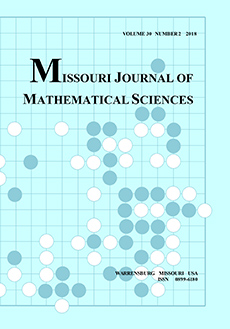Abstract
A finite set of integers $D$ with $0\in D$ is basic for the base $b\in \mathbb Z$ if every $z\in\mathbb Z$ can be written uniquely as an integer in the base $b$ with digits from $D$. Since such a base representation is unsigned, basic sets must have a negative base $b$ or some negative integers in $D$. The fraction set for $(b,D)$ is the set of all representable numbers with integer part zero. We show that if $(b,D)$ is basic and $D$ consists of consecutive digits, then the fraction set is an interval of length one whose endpoints have redundant representations. Furthermore, we show that if $D$ does not consist of consecutive integers, then $F$ is disconnected.
Citation
Darren D. Wick. "Fraction Sets for Basic Digit Sets." Missouri J. Math. Sci. 22 (2) 91 - 96, May 2010. https://doi.org/10.35834/mjms/1312233138
Information




